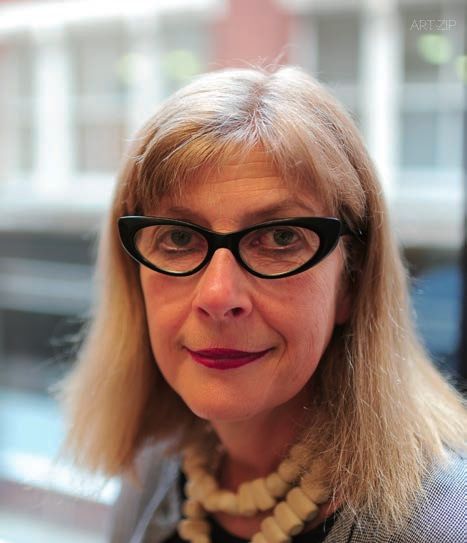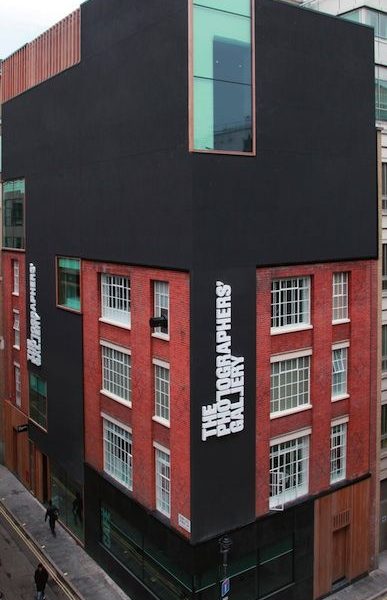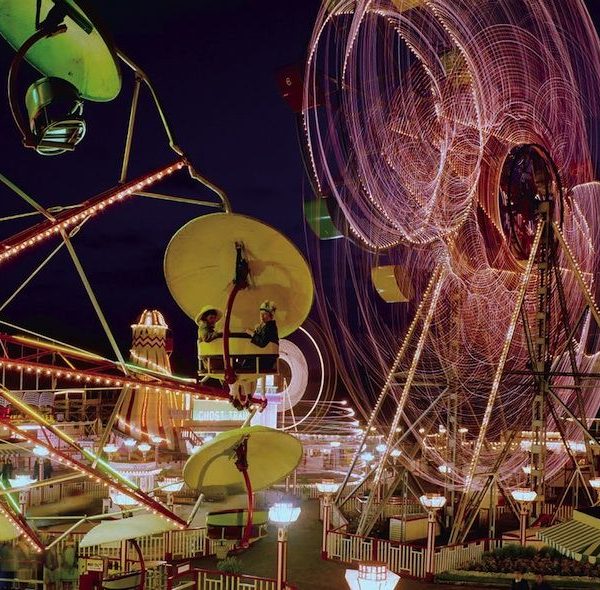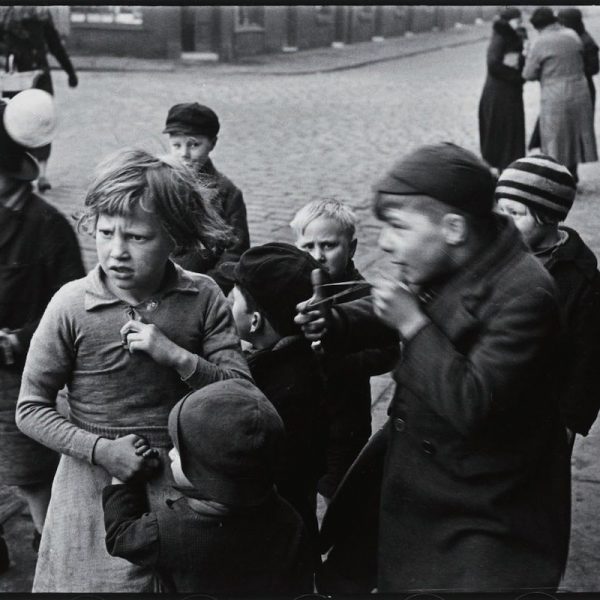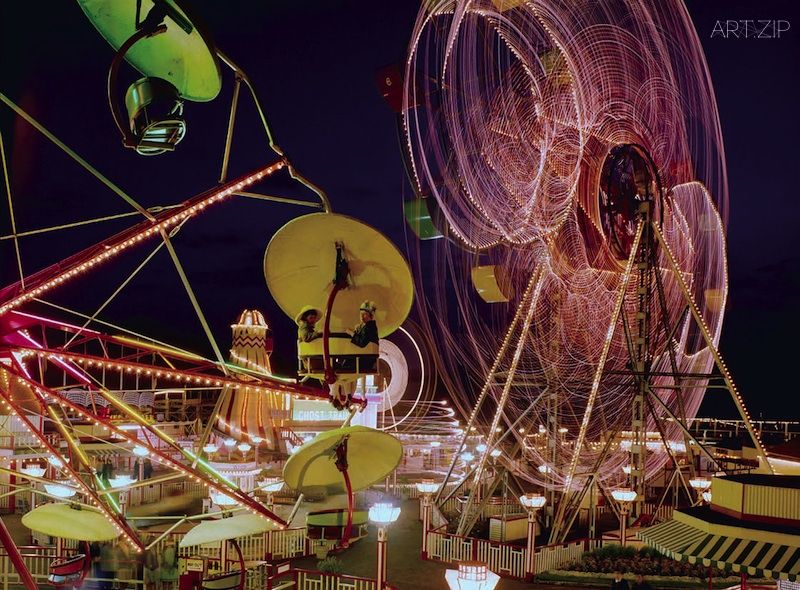
.
ART.ZIP: Your background is Art History, and then further study photography, is it? Why photography is so special for you?
BR: When I began my academic career in Australia in the 1970s, there were no places to study the history or theory of photography – even when I arrived in Britain to do my MA at the Courtauld Institute of Art in 1980, I still was not able to focus on photography; it is really only in the last decade that the academic study of photography as part of art history has become available as an option for students. Photography has been very special to me since my adolescence. As I grew up in Australia I felt the importance of the medium as a carrier of meaning perhaps more acutely because of the tyranny of distance.
ART.ZIP:你之前讀的是藝術史,然後專攻攝影是嗎?攝影對你來說有什麼特別之處嗎?
BR:20世紀70年代的時候我在澳大利亞開展我的學術研究,當時並沒有任何院校能提供攝影史 或攝影理論這樣的相關學科,即使到了80年代,我在英國考陶德藝術學院讀碩士的時候也沒有, 所以在當時的環境下我還沒有途徑專門研究攝影;直到過去十年,攝影才成為藝術史的一部分被 納入學術課程。從少年時起我就覺得攝影很特別,可能因為我在澳大利亞長大,那種距離的束縛 讓我特別能夠理解攝影作為意義載體的重要性。
.
ART.ZIP: Camera nowadays is much more affordable than the past, everyone could take pictures, what would you say photography’s effect on mass culture? Good ones and bad ones?
BR: The evolution of the camera phone which has led to everyone believing they are a photographer has had positive as well as negative outcomes – clearly the fact that photography has become democratized so that nearly everyone has access to a camera (rather than a small elite who previously could afford the expensive cameras and cost of printing) is a good thing. It enables people to develop their visual awareness of the world and experiment in interesting ways in the production of images. On the other hand, it has also resulted in a tsunami of images which are never going to be stored, saved properly or printed. Some critics feel that this surfeit of images neutralizes their visual impact and emotional force and leads to compassion fatigue. There is no doubt that the impact of the network image and web 2.0 has led to a reassessment of the way in which personal subjectivity may be changing as a result of participation in the global image economy and what level and kind of engagement now constitute its value and meaning.
ART.ZIP:相機現在變得隨手可得了,每一個人都能拍照片,你覺得攝影對大眾文化產生了什麼 樣的影響呢?好的和壞的又各有什麼呢?
BR:拍照手機的出現讓所有人都認為自己就是攝影師,這樣有積極的一面但也不能排除消極的影響 。首 先 很 明 顯 的 ,攝 影 變 得 民 主 化 了 ,幾 乎 所 有 人 都可以擁有一台相機–而不像以前那樣只有一 小部分的精英才能負擔得起昂貴的相機和沖洗照 片–這是好的方面。這有助於人們發展視覺上對 世界的認知,利用各種有趣的方式來製作圖像。但 另一方面,這種海量的圖像沖擊導致照片沒有被合 理地保存,保管或沖洗。有些評論家認為這種過量 的圖片生產減弱了它們應有的視覺和情感沖擊,最 終導致人們視覺疲勞和熱情不再。不可質疑的是, 網絡圖像的影響和WEB2.0時代讓我們不得不重新評估個人主體性的變化,因為參與全球性圖像經濟的程度及方式直接影 響了主體性的價值與意義。
ART.ZIP: What would you see the future or trend of photography? Is it becoming much prosperous or have gone downhill?
BR: If this question concerns trends within the commercial market, then yes compared to the 1970/80s, photographers who operate within the contemporary art market are definitely more prosperous than they have ever been – e.g. Jeff Wall, Andreas Gursky, Cindy Sherman. “Straight’ photographers have also benefitted from the rise in art market interest in the medium – thanks also to the promotional strategies of specialist galleries e.g. Fraenkel, Greenberg, Hamiltons and the emergence of photofairs such as Paris Photo.
For the majority of young and emerging photographers, getting a foothold within the market remains highly competitive and very hard – many struggle to find representation especially in London where there are very few commercial galleries specializing solely in photography, and find they need to pursue other ends (teaching, editorial work etc) to earn a living from their work.
ART.ZIP:你認為攝影的未來方向是什麼呢?現今攝影算是越來越繁榮 呢,還是有點走下坡呢?
BR:如果從商業市場前景來說的話,那麼答案是肯定的,相比於七、八 十年代,攝影師在當代藝術市場上肯定比以前要好很多,譬如潔夫·沃 爾(JEFF WALL) ,安德瑞思·古斯奇(ANDREAS GURSKY),辛蒂·雪曼 (CINDY SHERMAN)。 “如實攝影(STRAIGHT PHOTOGRAPHY)”的 攝影師也同樣因為這種媒介在藝術市場的興起而受益,還有多得各種 攝影畫廊的宣傳策略吧,像法蘭克爾畫廊(FRAENKEL GALLERY),豪 沃德·格林博格畫廊(HOWARD GREENBERG GALLERY),漢密頓斯畫 廊(HAMILTONS GALLERY)等,還有就是像巴黎攝影博覽會(PARIS PHOTO)這類攝影博覽會的出現也促使攝影產業蓬勃發展。
對於大部分年輕和新生代攝影師,在市場上能站一席之地還是非常難的, 很多人都在爭取找畫廊代理,尤其是在倫敦,很少商業畫廊會 只做攝影作品代理,所以攝影師們都需要幹別的工作來養活 自 己 ,譬 如 教 學 、編 輯 工 作 等 等 。
.
.
ART.ZIP: You have engaged in photography for a long time, any interesting stories about photography to share? Any views on photography have changed?
BR: Photography has changed enormously in the 40 years I have been involved – there is now a fundamental awareness of the importance of photography’s critical role within the world – I see it almost as ‘wallpaper’ that links nearly everything of great importance together in our understanding of the world. Photography changes everything.
ART.ZIP:你已經從事攝影工作這麼多年了,這些年來你對攝 影的看法和與過去有發生什麼大的變化嗎?有什麼有趣的故 事可以分享嗎?
BR:在我從事攝影的過去40年裡,攝影確實發生了天翻地覆 的變化,現在人們終於從根本上意識到攝影對世界產生的重 要作用,我會把它比作像“壁紙”,它把我們認識世界的每樣重 要事物都連接在一起。攝影改變了一切。
.
ART.ZIP: How would you define a good photographic work?
BR: That’s nearly impossible to define – but for me it is a work that offers repeated viewing, that operates on more than one level, which is multilayered and retains a degree of ambiguity.
ART.ZIP:你如何定義一件好的攝影作品?
BR:這個幾乎無法定義,但是對我來說,一件好的攝影作品能 讓你重複地觀看,並提供多種解讀的可能性,能保持一種開放 性討論的就是一件好作品。
.
ART.ZIP: The Photographers’ Gallery was founded in 1971, what’s the intention of the establishment? What are the changes during these 42years? What is the future direction of the gallery? Could you name some programs?
BR: When it was founded in 1971, the main intention was to promote photography as an art form. At that time most people only understood photography as a mass media tool of communication rather than a vehicle for creative expression. Through our 40 years the Gallery has endeavored to promote an understanding of photography’s use across an expanded field – not just as in its applied or functional form (advertising, fashion), but its capacity to be operate outside the frame and alongside other media such as drawing, sculpture, collage and as an integral part of contemporary art.
ART.ZIP:畫廊在1971年成立,當時創始人建立畫廊的初衷 是什麼呢?經過42年的發展,現在畫廊的立意與最初有發生 什麼樣的改變呢?畫廊未來發展的方向是什麼呢?能推薦一 些項目嗎?
BR:畫廊在1971年成立,當年的主要目的就是促進攝影作為 一種藝術形式來發展。當時很多人都只把攝影看作一種大眾 媒介溝通的工具,而不是創意表達的手法。 40年來畫廊已經 通過不懈努力使得攝影的使用在更廣泛的領域得到認同,不 僅僅是其應用或功能形式上,例如廣告攝影、時尚攝影,而是 攝影的應用不再局限於鏡頭內外,並且與其他媒介相結合,譬 如繪畫、雕塑、拼貼,攝影真正成為當代藝術一個不可分割的 部分。
.
ART.ZIP: The Gallery has been through two years redevelopment (2010- 2012), apart from more spacious space and well-designed interior to control the light, will it go to a new direction or any new programmes have been added?
BR: We are delighted the Gallery has had a chance to create a purpose– built new space in which to provide both artists and the public the spaces required to show and appreciate photography in the 21st century. Our future intentions are to build on the new location and take photography out into the street by developing a public realm programme in Ramillies Street to attract a new audience off Oxford Street.
ART.ZIP:畫廊經歷了兩年的重建(2010-2012),除了空間 擴展到三層和特殊設計來控制室內光線以外,畫廊有什麼發 展新方向呢?增加了什麼新項目嗎?
BR:我們很高興畫廊有機會建成一個為藝術家和大眾使用而 特別打造的新空間,給大家展示和欣賞21世紀的攝影。我們 未來的規劃是要在這個新據點把攝影帶到街頭,在拉米利斯 大街(RAMILLIES STREET)發展公共項目吸引牛津街上的新 觀眾。
ART.ZIP: The Gallery’s annual photography prize is in its 17th year, what is your judging standard? Any changes through these years? What is the difference from other photography awards? What kind of support will the winner receive?
BR: The Deutsche Börse Prize is now in its 7th year – the previous 10 years were supported by Citibank. There have been 2 changes over the past 17 years – we reduced the number of candidates from 5 to 4 in 2006 and also broadened the prize to include publications as well as exhibitions. The difference from other prizes is that the criteria for the winner (who receives £30,000) is the individual who has made the most significant contribution to photography over the past 12 months – it is not a lifetime achievement award; nor is it based around any one particular theme.
ART.ZIP:畫廊的年度攝影獎已經進行了17年了,你們的評判 標準有發生什麼變化嗎?和其他攝影獎項有什麼不同嗎?獲 獎者會受到怎樣的支持和幫助呢?
BR:德意志攝影獎(THE DEUTSCHE BÖRSE PRIZE)已經邁 進第七個年頭了,在此之前10年的年度攝影獎是由花旗銀行 (CITIBANK)所支持。過去17年間我們經歷了兩個重要的變 化,我們在2006年把5位候選人名額改為4位,而加大了獎勵的 力度,包括為得獎者出版圖冊和舉辦展覽。這個獎項與別的攝 影獎的不同之處就是得獎者的評判標準:在過去12個月內對 攝影作出重大貢獻的個人–得獎者將會得到30000鎊的獎 勵–這不是一個終生成就獎,也不是關於任何主題的獎項。
.
ART.ZIP: We notice that you have education programs, what are they?
BR: We have a wide range of education programmes designed to meet the needs of everyone from enthusiasts with little knowledge of the medium to those professionals who are academically or vocationally involved in photography – everything from practical skills development and workshops (Stumped/The Social), artists panel to Masterclasses and our Key Speakers series. We also have a separate series of educational events aimed at young people, families and children.
ART.ZIP:我留意到你們會有一些關於攝影的教育項 目,都有哪些呢?
BR:我們設立了有各種類型的教育項目來滿足大家 的需求,從只對攝影有一點了解的攝影愛好者,到從 事學術研究或從事攝影工作的專業人員,所有從實際 操作技巧、工作坊(STUMPED/THE SOCIAL項目) ,藝術家小組,大師講座,到我們的主講師系列(KEY SPEAKERS)。我們也有單獨的系列教育活動來針對年 輕人、家庭和兒童這些群體。
.
ART.ZIP: How would you say the Gallery’s significance and distinctiveness?
BR: The Gallery is the only publicly funded specialist gallery for photography in London so provides those interested in learning more about the medium to see, explore and enjoy photography through a varied range of exhibitions, events and workshops. Our reputation for high quality, innovation, access and showing the best-known newcomers in the world of photography are cited by our audience as the reasons they visit.
ART.ZIP:對於推動攝影的發展,你們是如何定位自 己在攝影界的重要性和獨特性?
BR:畫廊是倫敦唯一一家由公共資金支持、只專注於 攝影的畫廊,我們為那些有興趣學習更多關於攝影這 種媒介的人提供各式各樣的展覽、活動和工作坊,讓 他們發掘、探索和享受攝影。來訪畫廊的觀眾表示, 畫廊以高質、創新、及大膽展示新生代攝影師作品而 使他們慕名前來。
.
ART.ZIP: What kind of projects or programmes that show your support to emerging photographers? Could you tell us about the FreshFace+WildEyed programme and Folio Forum? Or any others you would recommend?
BR: Supporting emerging artists is a critical part of both our education and exhibition programme – FFWE is designed to offer support to graduates who have been out of college for one year and are beginning to identify the lack of critical engagement as a barrier to the further development of their practice. In addition to offering an exhibition to 22-25 artists at the gallery each summer, 6 artists are then offered an opportunity to participate in a one year intense mentoring programme.
Folio Forum (recently retitled STUMPED) and The Social which focuses on a vocational issue (using social media/writing funding application) also provides practical advice in an informal context (free of charge) to artists 4-5 times per year.
ART.ZIP:對於支持新生代攝影師你們有什麼具體 的項目呢?能說說FRESHFACE+WILDEYED項目和 FOLIO FORUM嗎?
BR:支持新生代藝術家是我們教育和展覽項目裡非 常重要的一環,FFWE–FRESHFACE+WIDEEYED 是為畢業一年的學生提供支持的項目,因為畢業以後 他們很可能錯過一些重要的專業參與,而這些缺失 為他們進一步發展造成了嚴重的障礙。因此,除了每 年夏天給22-25歲的藝術家在畫廊進行展覽的機會以 外,其中被挑選的六位藝術家還有機會參與為期一 年的有針對性的指導項目 FOLIO FORUM (最近被改 名為STUMPED) 和THE SOCIAL項目著重於職業發 展問題(譬如如何利用社交媒體,如何申請基金援助 等),每年進行4-5次免費給藝術家提供實際操作建 議的活動。

